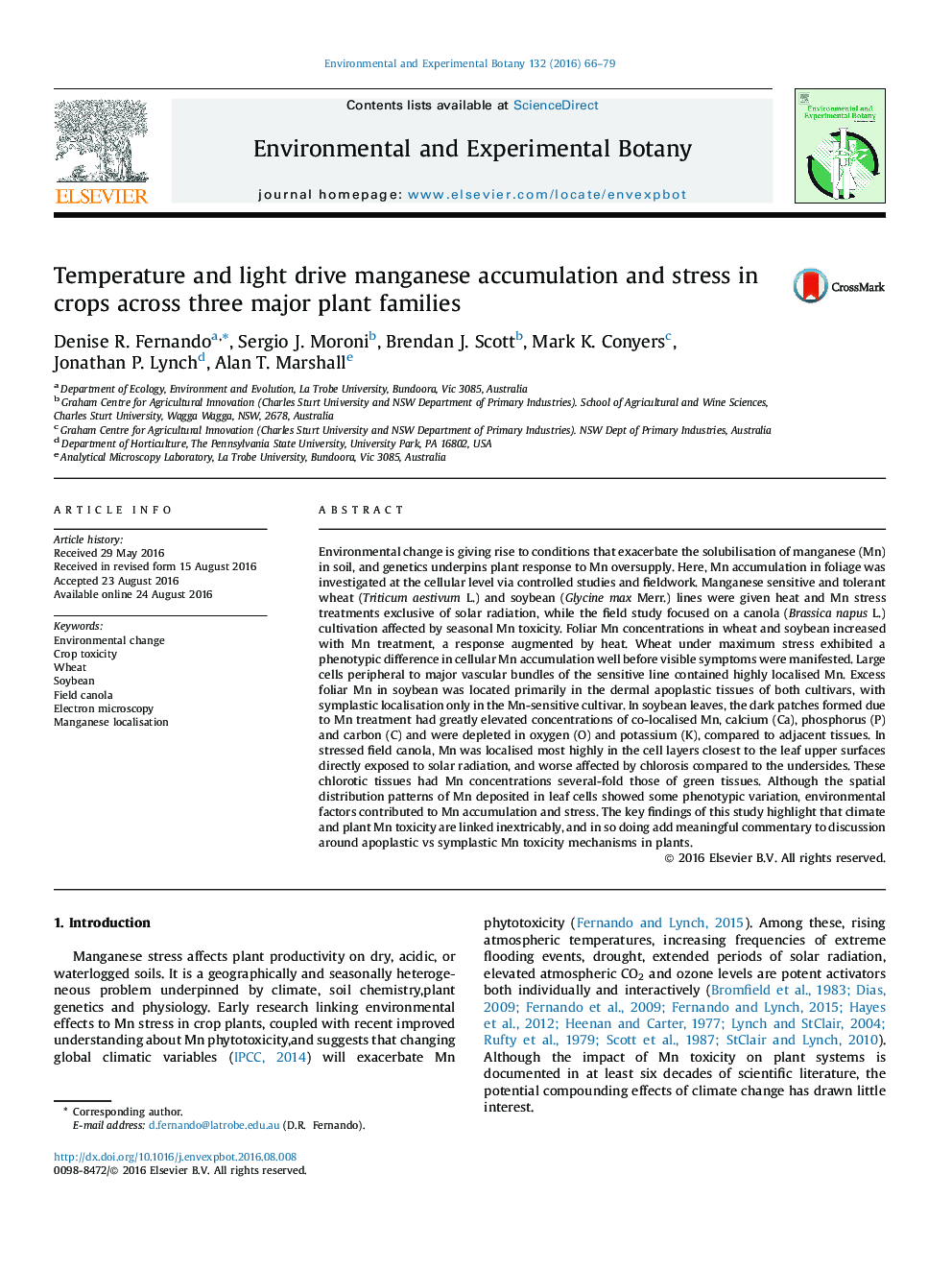| کد مقاله | کد نشریه | سال انتشار | مقاله انگلیسی | نسخه تمام متن |
|---|---|---|---|---|
| 4554046 | 1628045 | 2016 | 14 صفحه PDF | دانلود رایگان |
• Heat and sunlight favour Mn overaccumulation and stress in crops from three major plant families.
• Mn overloading in to symplastic cells paralleled visible Mn stress and phenotypic Mn sensitivity.
• Global warming and extended periods of solar radiation will exacerbate plant Mn stress.
Environmental change is giving rise to conditions that exacerbate the solubilisation of manganese (Mn) in soil, and genetics underpins plant response to Mn oversupply. Here, Mn accumulation in foliage was investigated at the cellular level via controlled studies and fieldwork. Manganese sensitive and tolerant wheat (Triticum aestivum L.) and soybean (Glycine max Merr.) lines were given heat and Mn stress treatments exclusive of solar radiation, while the field study focused on a canola (Brassica napus L.) cultivation affected by seasonal Mn toxicity. Foliar Mn concentrations in wheat and soybean increased with Mn treatment, a response augmented by heat. Wheat under maximum stress exhibited a phenotypic difference in cellular Mn accumulation well before visible symptoms were manifested. Large cells peripheral to major vascular bundles of the sensitive line contained highly localised Mn. Excess foliar Mn in soybean was located primarily in the dermal apoplastic tissues of both cultivars, with symplastic localisation only in the Mn-sensitive cultivar. In soybean leaves, the dark patches formed due to Mn treatment had greatly elevated concentrations of co-localised Mn, calcium (Ca), phosphorus (P) and carbon (C) and were depleted in oxygen (O) and potassium (K), compared to adjacent tissues. In stressed field canola, Mn was localised most highly in the cell layers closest to the leaf upper surfaces directly exposed to solar radiation, and worse affected by chlorosis compared to the undersides. These chlorotic tissues had Mn concentrations several-fold those of green tissues. Although the spatial distribution patterns of Mn deposited in leaf cells showed some phenotypic variation, environmental factors contributed to Mn accumulation and stress. The key findings of this study highlight that climate and plant Mn toxicity are linked inextricably, and in so doing add meaningful commentary to discussion around apoplastic vs symplastic Mn toxicity mechanisms in plants.
Journal: Environmental and Experimental Botany - Volume 132, December 2016, Pages 66–79
